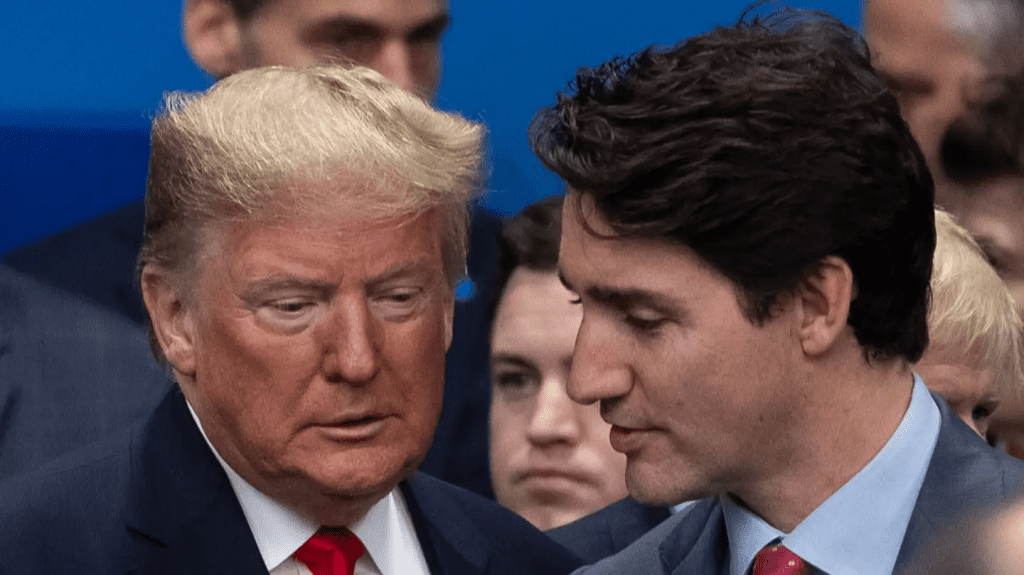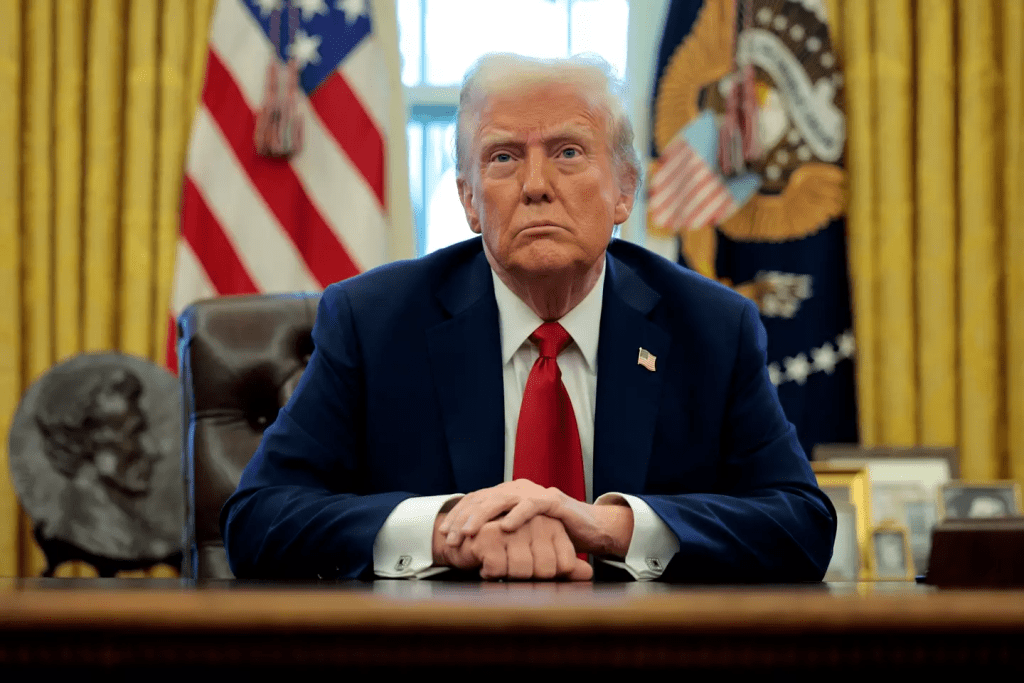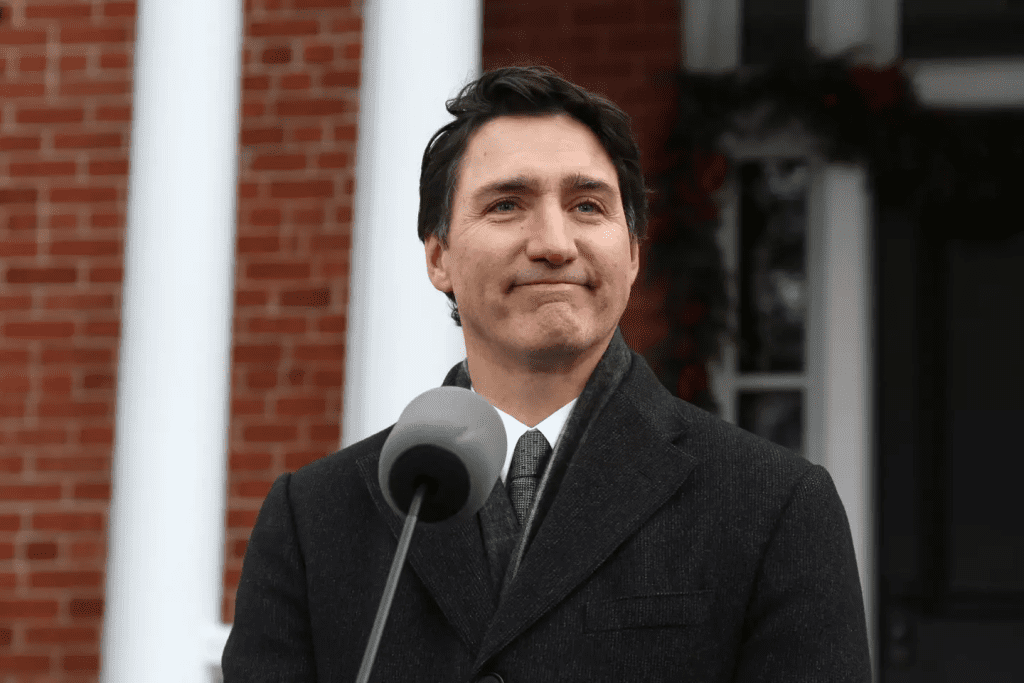President Donald Trump has wasted no time making sweeping policy changes in his return to the White House. Among his most aggressive moves has been the imposition of steep tariffs on key trade partners, including Canada, Mexico, and China. But now, Canada and Mexico are fighting back—announcing their own retaliatory tariffs in response to what they call unfair economic pressure.
With tensions rising, the global trade landscape is shifting once again. Let’s dive into the details of the escalating trade war, what it means for American businesses, and how the retaliatory measures from Canada and Mexico could impact the U.S. economy.

Trump’s Aggressive Tariff Hike Sparks International Backlash
In a bold economic move, President Trump raised import tariffs on Canada and Mexico to 25%, while increasing tariffs on Chinese goods by 10%. His administration argues that these tariffs are necessary to protect American industries and jobs, claiming that foreign competitors have long taken advantage of U.S. markets.
However, the backlash was swift. Canadian Prime Minister Justin Trudeau and Mexican President Claudia Sheinbaum condemned the tariffs, calling them disruptive and harmful to trade relationships.

Trudeau, in a strongly worded statement, emphasized that Canada would not stand idly by:
“We’re ready with a response—a purposeful, forceful, but reasonable and immediate response.”
Sheinbaum echoed similar sentiments, assuring the Mexican people that her government had a multi-layered strategy to counteract the economic impact.
“We have Plan A, Plan B, Plan C, depending on what the U.S. government decides,” she stated.
Canada Strikes Back: Retaliatory Tariffs on $155 Billion of U.S. Goods
Just hours after Trump’s announcement, Canada unveiled counter-tariffs targeting American goods valued at CA$155 billion. These tariffs directly impact key U.S. industries, including agriculture, steel, and automobile manufacturing.
Trudeau minced no words when addressing Americans about the potential fallout:
“It will have real consequences for you, the American people.”
Canada’s response is seen as a direct challenge to Trump’s trade strategy. By targeting industries that heavily rely on exports, the Canadian government hopes to apply economic pressure that forces Washington to reconsider its stance.
Trudeau further expressed frustration, stating that the White House’s actions are divisive rather than unifying:
“The actions taken by the White House split us apart instead of bringing us together.”
With Canada being one of the U.S.’s largest trading partners, this move signals a serious escalation in tensions.
Mexico Takes a Stand: Rejecting U.S. Accusations and Fighting Back
Meanwhile, Mexico has not only imposed its own tariffs but also rebuked allegations from the Trump administration regarding crime and border security.
Sheinbaum, in a blistering social media post, rejected U.S. accusations that Mexico has ties to criminal organizations. She emphasized that rather than blaming Mexico, the U.S. should focus on addressing its own drug consumption crisis and financial systems that enable illegal activity.
“If the United States government and its agencies wanted to address the serious fentanyl consumption in their country, they could fight the sale of drugs on the streets of their major cities—which they don’t do—and the laundering of money that this illegal activity generates, which has done so much harm to its population.”
Mexico’s retaliatory tariffs target U.S. agricultural exports, electronics, and manufacturing components—industries crucial to American businesses. These measures are designed to apply economic pressure on states that heavily depend on Mexican trade, such as Texas, California, and Arizona.

The Impact on U.S. Businesses and Consumers
With both Canada and Mexico responding with strong economic countermeasures, American businesses and consumers are bound to feel the impact. Here’s what could happen next:
- Higher Prices on Consumer Goods
- With increased tariffs on imported materials, U.S. companies may pass on the added costs to consumers. This means higher prices for everyday goods like electronics, automobiles, and even groceries.
- Disruptions in the Supply Chain
- Many American manufacturers rely on raw materials and parts from Canada and Mexico. With higher tariffs, production costs will increase, potentially leading to job losses and business closures.
- Economic Tensions Between Key Trade Partners
- The U.S.-Canada-Mexico trade relationship is one of the most interconnected in the world. Disruptions in North American trade could cause long-term economic damage, impacting everything from agriculture to technology industries.
- Uncertainty for American Farmers
- Mexico and Canada are major buyers of American agricultural products. With new tariffs on farm goods, U.S. farmers could struggle to sell their crops and livestock, leading to economic hardship in rural areas.
Could This Trade War Spiral Out of Control?
The big question now is: Will this escalate even further?
While Canada and Mexico’s retaliatory measures are significant, they aren’t the only countries facing U.S. tariffs. China, the European Union, and other global players are closely watching the situation, and some may choose to respond with their own trade restrictions.
If the trade war expands beyond North America, the global economy could face serious disruptions. Financial markets are already reacting cautiously, with investors worried about long-term instability.
Despite the economic risks, Trump remains firm in his stance, believing these tariffs will ultimately strengthen the U.S. economy. However, history has shown that prolonged trade wars often harm all parties involved, leading to economic slowdowns and increased costs for consumers.

Final Thoughts: What’s Next for U.S.-Canada-Mexico Relations?
With Canada and Mexico standing firm, this trade war is far from over. The coming weeks will be crucial in determining whether negotiations can ease tensions or if economic conflict will intensify.
For now, businesses and consumers must brace for potential price hikes, supply chain disruptions, and economic uncertainty. As trade tensions grow, the stakes for North America’s economy have never been higher.
Will Trump’s bold move bring about the economic protection he promises, or will it backfire and damage U.S. industries? Only time will tell. One thing’s for sure—this trade war is just getting started.